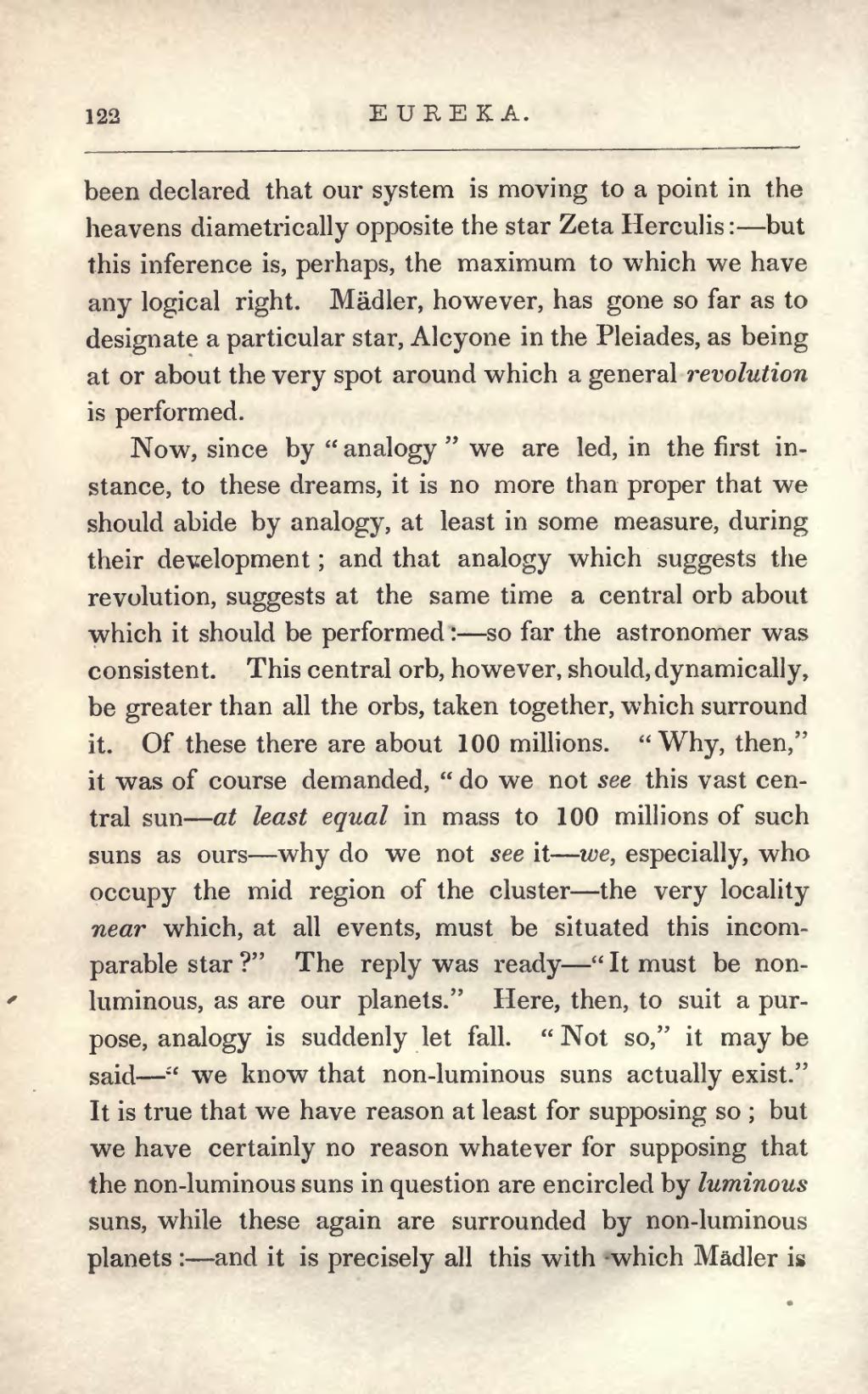been declared that our system is moving to a point in the heavens diametrically opposite the star Zeta Herculis:—but this inference is, perhaps, the maximum to which we have any logical right. Mädler, however, has gone so far as to designate a particular star, Alcyone in the Pleiades, as being at or about the very spot around which a general revolution is performed.
Now, since by "analogy" we are led, in the first instance, to these dreams, it is no more than proper that we should abide by analogy, at least in some measure, during their development; and that analogy which suggests the revolution, suggests at the same time a central orb about which it should be performed:—so far the astronomer was consistent. This central orb, however, should, dynamically, be greater than all the orbs, taken together, which surround it. Of these there are about 100 millions. "Why, then," it was of course demanded, "do we not see this vast central sun—at least equal in mass to 100 millions of such suns as ours—why do we not see it—we, especially, who occupy the mid region of the cluster—the very locality near which, at all events, must be situated this incomparable star?" The reply was ready—"It must be non-luminous, as are our planets." Here, then, to suit a purpose, analogy is suddenly let fall. "Not so," it may be said—"we know that non-luminous suns actually exist." It is true that we have reason at least for supposing so; but we have certainly no reason whatever for supposing that the non-luminous suns in question are encircled by luminous suns, while these again are surrounded by non-luminous planets:—and it is precisely all this with which Mädler is
